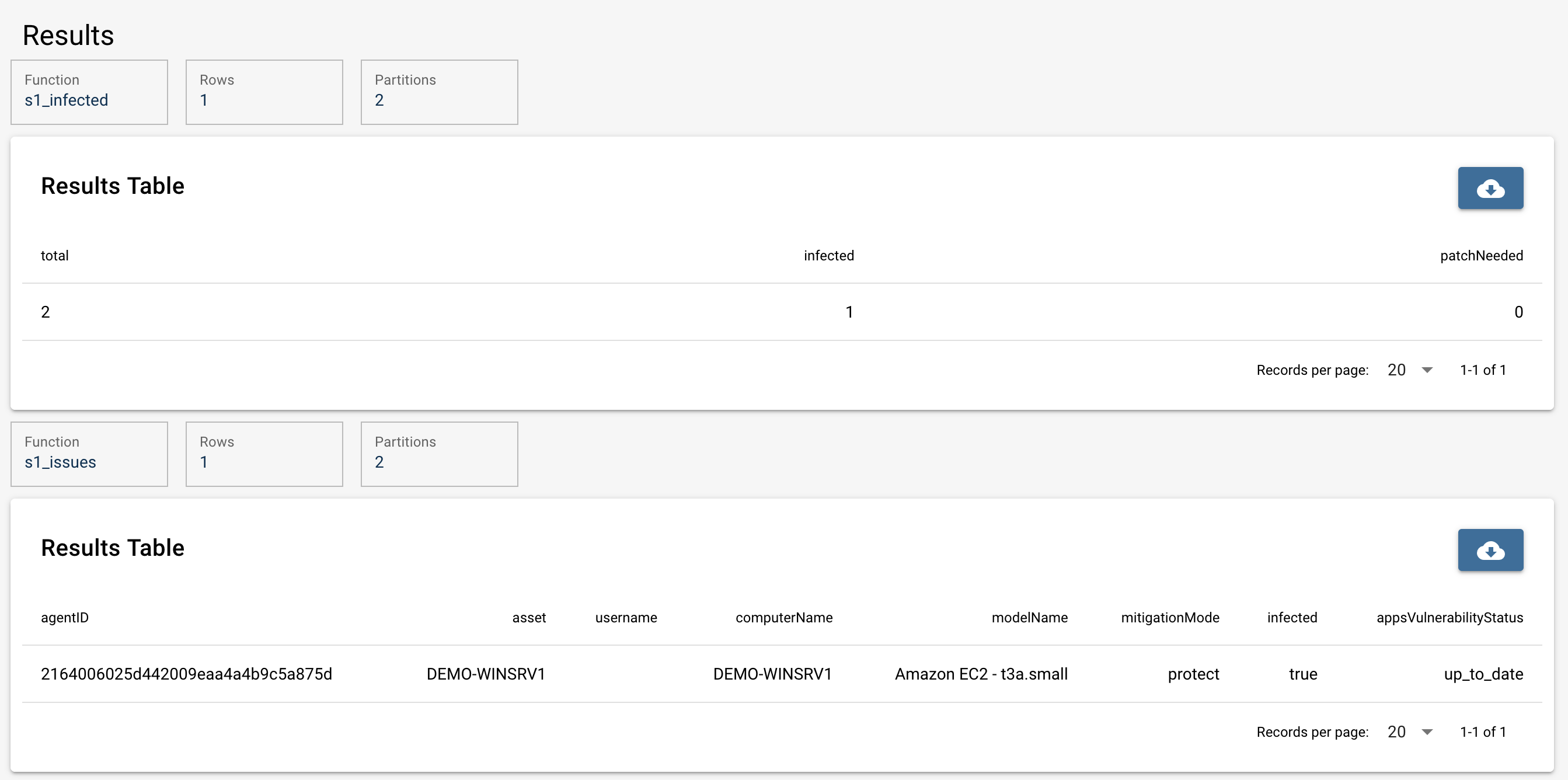V1 - Examples - Basic Information
Basic Information
load resource sentinelOneAgent
let {agentID,asset,username} = f("@sentinelOneAgent.translation")
let {computerName,modelName,mitigationMode,infected,appsVulnerabilityStatus} = f("@sentinelOneAgent")

In this case, all the information are listed in the result table.
How to know what variables does a resource contain is introduced in Appendix-Resource.
Basic Information: wrote in function
Based on the last case, sometimes there’s more than one task we want to do at one time after getting an overview of the database. To do this, we can wrap a module of contexts into a function and use stream to call them.
function s1_infected()
load resource sentinelOneAgent
let {agentID} = f("@sentinelOneAgent.translation")
let {computerName,modelName,mitigationMode,infected,appsVulnerabilityStatus} = f("@sentinelOneAgent")
aggregate total=count(),infected=count(infected),patchNeeded=count(appsVulnerabilityStatus=="patch_required")
end
function s1_issues()
load resource sentinelOneAgent
let {agentID,asset,username} = f("@sentinelOneAgent.translation")
let {computerName,modelName,mitigationMode,infected,appsVulnerabilityStatus} = f("@sentinelOneAgent")
where infected==true or appsVulnerabilityStatus=="patch_required"
end
stream infected_systems=s1_infected()
stream issues=s1_issues()

In this case, there are two functions. The first is to extract the total number of records, the total number of records identified as infected, and the total number of records which need patch. The second one is to display the records identified as infected or requiring patch.